
He started with six Harley Davidsons when he was just 16 years old
CLASSIC motorcycle buffs dream of what they call ‘barn finds’ – original old bikes, covered in dust and cobwebs, pushed to the back of a shed and left there for decades. There’s a collector in Western Australia who’s been accumulating old bikes and pushing them to the back of his shed for almost 50 years. They call him Toad, his collection now tops 400 bikes, and we were invited into his amazing treasure trove to compile this report.
Republished from 2017
As soon as you touch an old bike with sandpaper, it’s no longer original – Toad
THERE’S an old share trading strategy that investment advisers sometimes talk about, that’s referred to as ‘contrary trading’.
It’s based on the notion that, when almost everyone is enthusiastically buying shares in a certain commodity, that commodity’s true value has already peaked. And when almost everyone is selling a certain commodity, its true value has already bottomed.
‘Contrary traders’ are investors who buy when most people are selling, and sell when most people are buying. If they get the timing right, they buy cheap, sell expensive, and profit handsomely. Well, that’s the theory.
Of course, most people don’t have the courage, the personality or the patience for contrary trading. If a certain stock or commodity is hot, everyone wants a piece of it. And if a commodity is on the nose, everyone wants out. The sheep follow the sheep; the early sheep make profits, the middle sheep break even and the late sheep, well, they get fleeced.
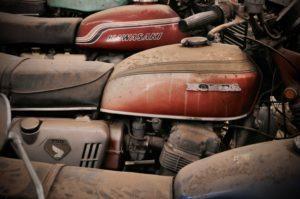 Most motorcyclists are a bit like share traders. We move with the fashion. People who like new bikes buy new bikes, and trade up as the latest model makes it’s predecessor outdated and unfashionable. People who like older bikes are the same, but different. Fashion still rules. Most classic bike buffs hark back to bikes that were fashionable when they were young.
Most motorcyclists are a bit like share traders. We move with the fashion. People who like new bikes buy new bikes, and trade up as the latest model makes it’s predecessor outdated and unfashionable. People who like older bikes are the same, but different. Fashion still rules. Most classic bike buffs hark back to bikes that were fashionable when they were young.
People pay big money nowadays for a Z1 Kawasaki or an early Honda Four or a BSA Gold Star or a round-case Ducati. But we forget that, in the years between being fashionable new machines and fashionable old classics, those bikes spent a whole bunch of years being nothing more than old, worn-out motorbikes.

It would be fair to describe the motorcycle collector at the centre of this story as a contrary collector. He has amassed what is almost certainly the biggest collection of original old bikes in Western Australia, and one of the biggest in Australia. And he’s done it, mostly, by accumulating unwanted, unfashionable bikes and salting them away; not just for a year or two, but for decades.
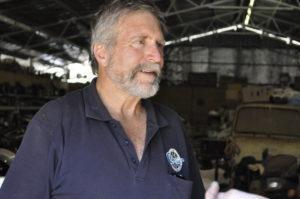
The man’s name is Tom, but most people call him Toad. His bikes are housed in and around several sheds on a rural property in the southern half of Western Australia. We’re not publishing Toad’s surname and, for obvious reasons, we’re not going to reveal the location of his amazing collection.
The photographs that accompany this story (and the extras in our photo gallery) capture some of the bikes that are packed, scattered and (in one case, anyway) hung from trees around Toad’s property. Toad says he has about 450 bikes. I didn’t count them, but the number seems about right.
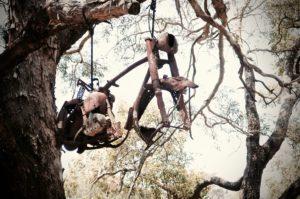
So, how did it get to this?
“I’ve always loved mechanical things,” Tom told The Bike Shed Times, “but I started riding bikes because I couldn’t fly planes.
“Flying lessons were very expensive, far too expensive for me, so I went for the nearest thing I could find: riding motorbikes.
“My uncle had a friend who owned a WLA Harley that he used to round up sheep in the 1960s, out in Wongan Hills. There was no such thing as dirt bikes back then. Everyone used Harleys or British singles. They were cheap, easy to fix, and did the job. I learned to ride on that WLA, and I loved it.”
And so it was that 16-year-old Toad found himself at an auction in Perth in 1968, as the Australian Army sold off one of the last batches of its no-longer-wanted, utterly unfashionable, but tough and reliable WLA Harley Davidsons. Toad’s uncle was there, considering a Harley for himself. Toad was with him, but the young lad had bigger plans.
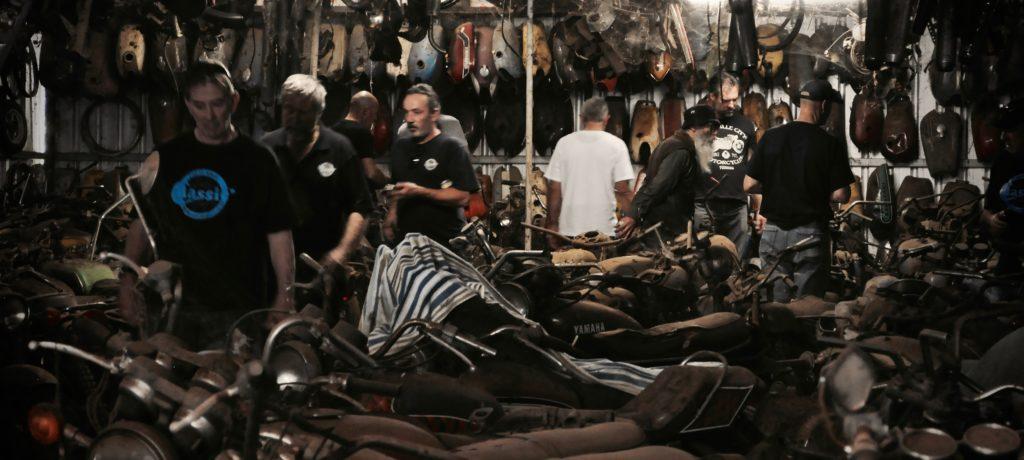
 “Word got out that this particular auction was going to offer the last batch of WLAs to be sold in Perth, so I accumulated all the money I had in the world — a bit over 200 dollars — and I spent the lot. I bought six bikes. They were all WLAs, and they all went for the same price; 35 dollars each. But when the bikes were allocated to the successful buyers, two of mine were brand new. Still in their crates. And the crates had never even been opened.”
“Word got out that this particular auction was going to offer the last batch of WLAs to be sold in Perth, so I accumulated all the money I had in the world — a bit over 200 dollars — and I spent the lot. I bought six bikes. They were all WLAs, and they all went for the same price; 35 dollars each. But when the bikes were allocated to the successful buyers, two of mine were brand new. Still in their crates. And the crates had never even been opened.”
Toad opened those crates, took out the bikes, then loaded all the extra paraphernalia like tools, spare parts and gun carriers into his uncle’s trailer — and took it to the rubbish tip.
“The army gear that I threw away that day would be worth a lot of money now,” Toad muses, “but back then it was of no use or value to anyone. I just wanted the bikes!”
The two new bikes were on-sold almost immediately, recovering the money he’d spent to buy all six, and giving him some spending power to crank up his passion for collecting.
And so his serious collecting began with four Harleys — one of which is still in Toad’s shed, covered in decades of dust and looking very much like it did on that day at the Army auction back in ’68.
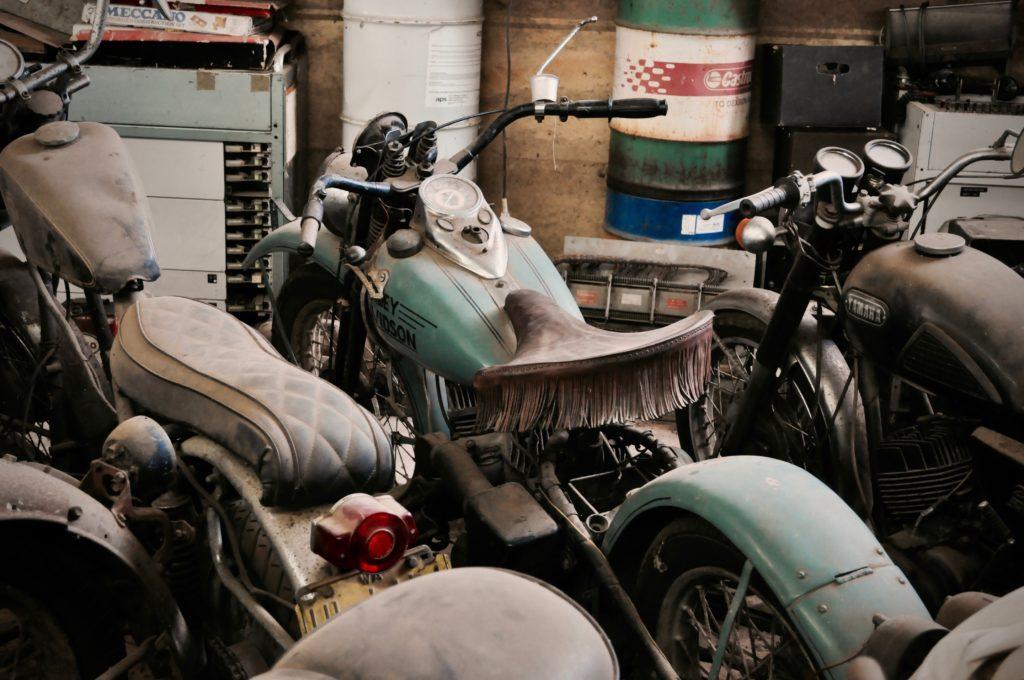
“I didn’t even have my licence yet and obviously didn’t own a house, but my uncle said I could store bikes in his shearing shed.”
And that’s precisely what young Toad did.
“People don’t believe me, but in 1969 you could buy a licensed and running BSA Gold Flash out of the Sunday Times classifieds for $1, and a Norton Dominator for $4. It’s true. No-one wanted them. Motorbikes were just cheap transport back in those days, and Japanese bikes were all the rage.”
Eventually, the flood of demand for Japanese bikes pushed the value of British bikes to zero.
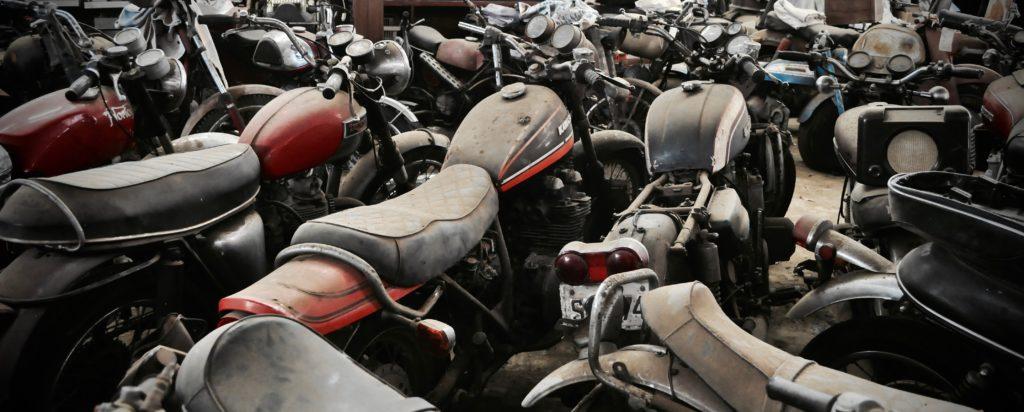
“People were riding their British bikes to the tip, taking off the number plates and hitching a ride home. It’s absolutely true. I spent two years at the Osborne Park tip, weekends I mean, just collecting unwanted bikes. I could fit five bikes on my trailer, and many Sundays I would go home with five bikes, all complete and running. In two years I collected 200 British bikes. Their owners were grateful because I gave them a lift home. And I got their bikes for free.”
Eventually, the bikes that no-one wanted became fashionable once again
Of course, the day would come when Toad’s bikes — the bikes that no-one wanted — would become fashionable once again.
“It started happening within just a few years,” Toad says.
“Once the new Japanese bikes had a few miles on them, they became less popular. Some people wished they still had their old British bikes. I remember swapping one of my old BSAs for three Honda 305 Dreams.”
And so the collection grew. And grew.
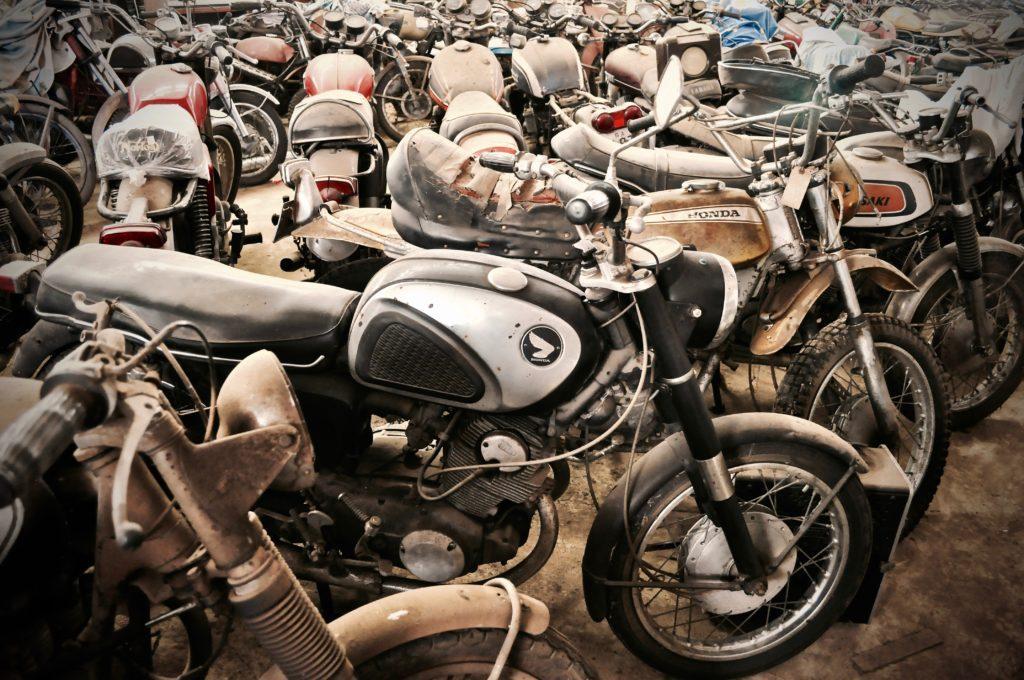
“My life-long dream was to have my collection open to the public,” he says.
“The main shed that I’m using now was going to be a museum, so people could enjoy my bikes in all their originality.”
But the museum plan went sour; hit by soaring insurance premiums.
“I was going full steam ahead in the late ’90s and early 2000s, working towards opening the museum. Then, in 2001, the U.S. twin towers terrorist attack happened. Virtually overnight, public liability insurance for my planned museum went from $4,000 a year to $20,000. And that wasn’t to insure the bikes, that was just to insure the people who would be visiting.
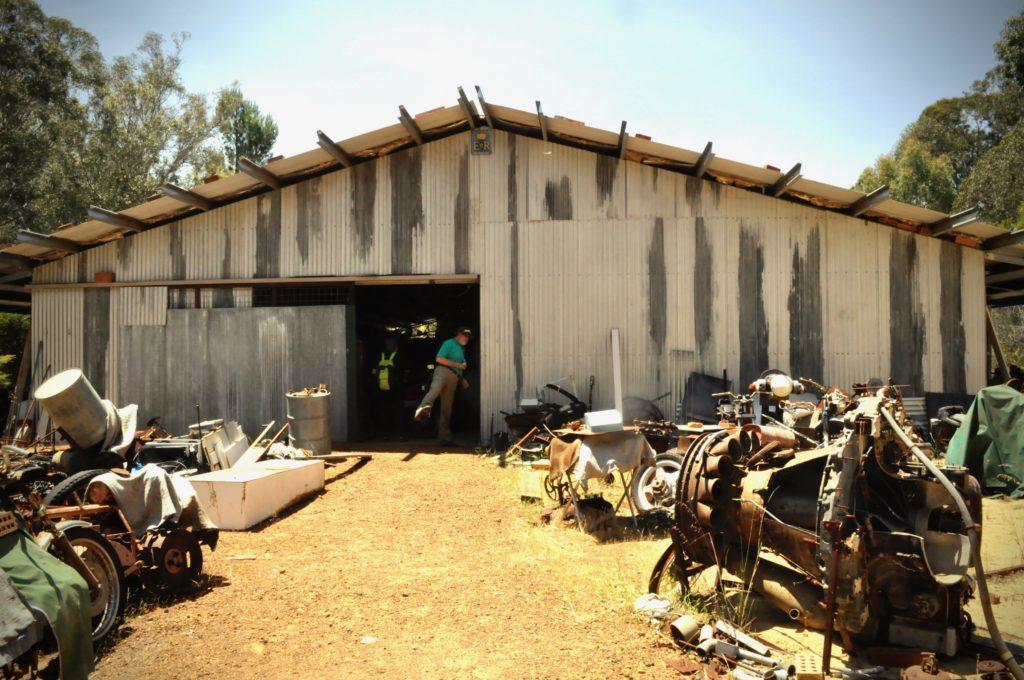
“And then when Hurricane Katrina hit New Orleans in 2005, the insurance companies had more news. It was no longer going to cost me $20,000 a year, it was now $35,000.
“It was all too much. The insurance made the venture unviable, and my neighbours were opposed to the idea too. So eventually I said ‘to hell with it’.
“But I kept collecting.”
Walking around Toad’s property, it quickly becomes clear that he is a collector, not a restorer. Just as it was back in the early 1970s, Toad’s bikes are untouched. Some are runners in good shape, some need work, and some look like they’d come from the rubbish tip — which indeed they have. They are also, for the most part anyway, everyday bikes.
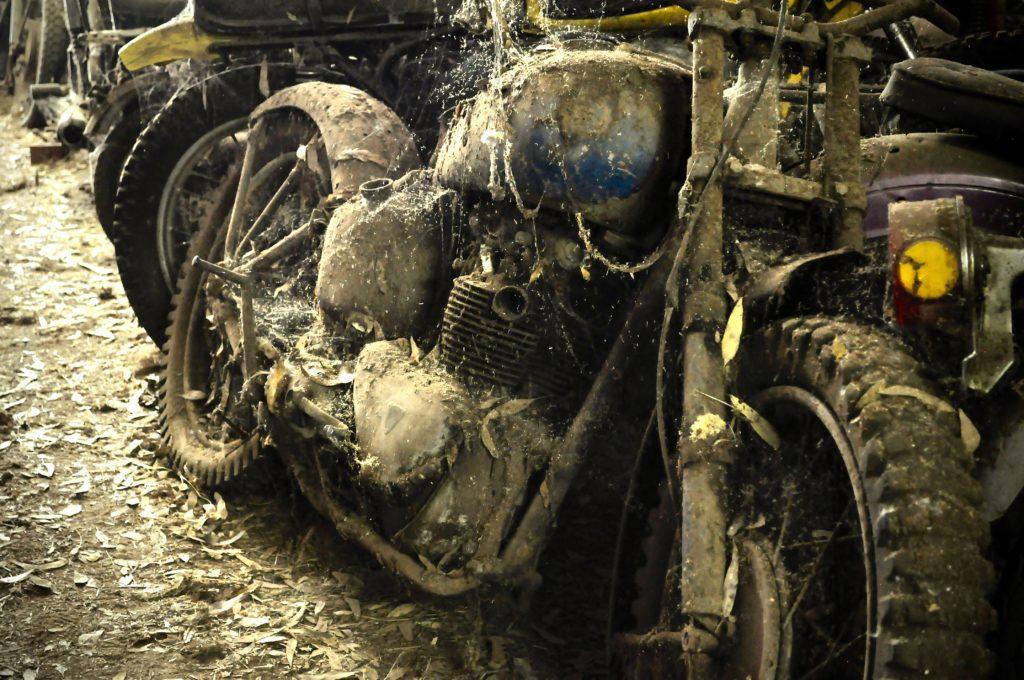
“I know there are a few exotic bikes in there, but mostly they are the bikes that regular people rode. They are the bikes that people cut their teeth on,” Toad says.
Shiny, pristine, fully-restored, big-dollar or near-new bikes have never been his target. His passion lies in a machine’s originality.
“Why does a bike have to be shiny? It doesn’t. To me, the value of the bikes in my collection is that they are original. Completely original. There’s a little MV Agusta in the shed which people want to buy from me and attack with sandpaper. They want to remove the original patina, and restore it.

“But as soon as you touch an old bike with sandpaper, it’s no longer original. And that’s the attraction. For me anyway. A bike that’s broken down and rusty and out of service is an original piece of machinery. Once you restore it, the originality has gone.”
Toad’s leave-them-as-they-are approach is far from universally popular, and he has plenty of critics.
The day I visited, Toad was hosting 50-odd members of a classic motorcycle club.
Many of the crowd had obviously visited the place before, but you could pick the ones who had not. They were the people with a look of astonishment on their faces.
And some of them were shaking their heads.
“It’s not right,” one of them said to me. “He should be moving them on. If he doesn’t want to restore them, he should let someone else do it.”
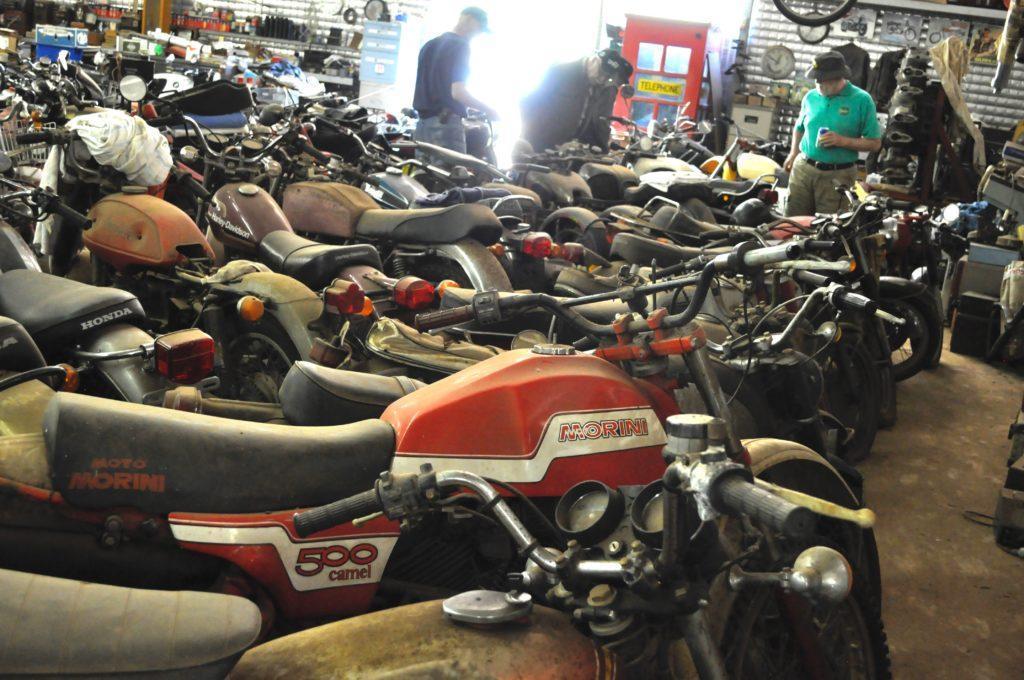
But for every critic, there was a fan.
“Toad has saved these bikes,” another said.
“If it weren’t for him, they would have been landfill years ago.”
So what does the future hold for this amazing collection?
Toad is still collecting and very rarely sells anything — so it’s a fair bet that the collection will continue to grow.
But then what?
“When I go,” Toad says “the whole lot will be auctioned.”
“Rosie and I don’t have any kids, so the money will go to something useful. Probably the Royal Flying Doctor Service.”
But until then, that nice little two-stroke MV will continue to wear its rusty tank; it’s originality protected by the contrary West Australian collector who believes a layer or two of dust has as much value as a coat of Autosol.
Photo gallery
Click here to see more pics from Toad’s collection.
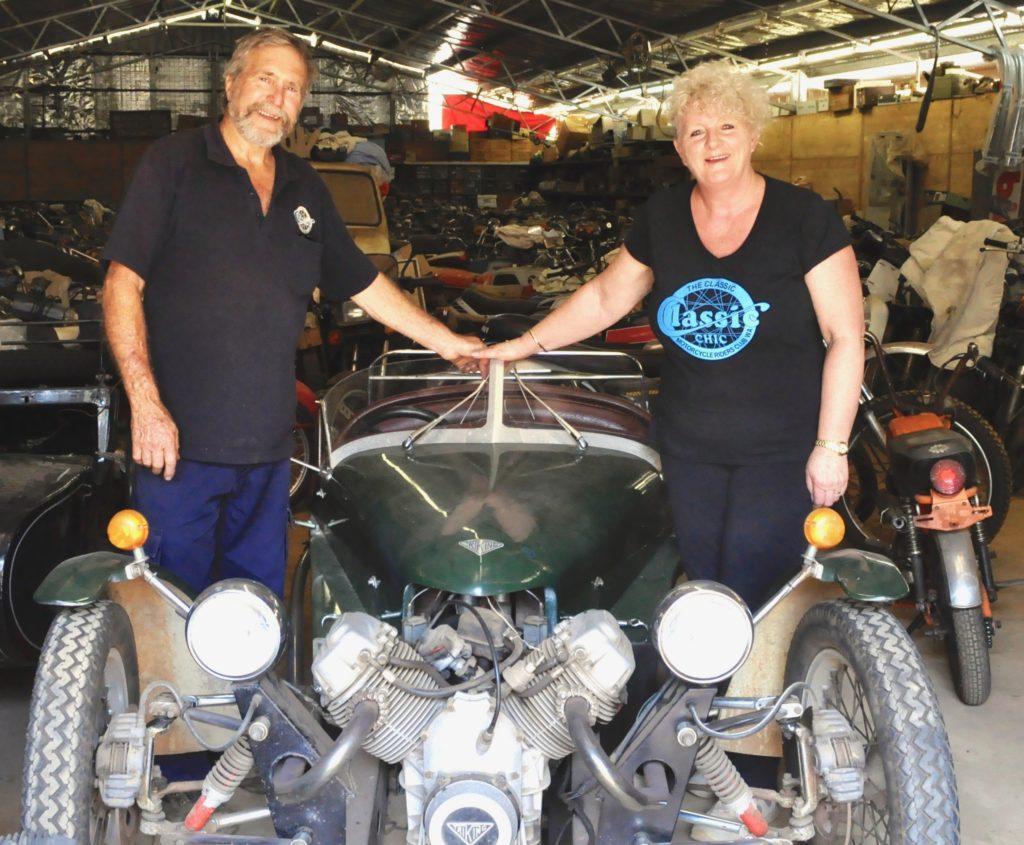


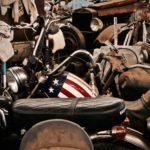
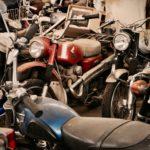
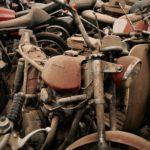

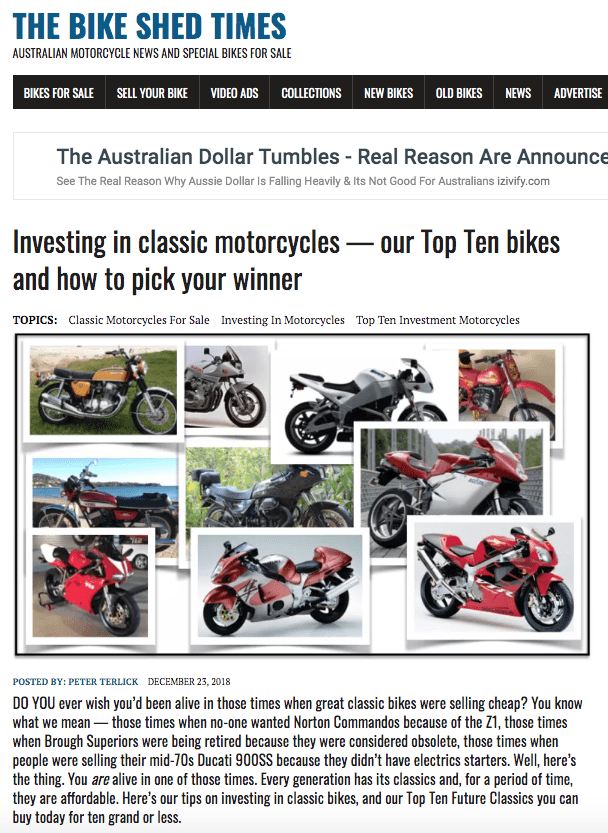



I would love just to sit in THAT shed. Just for ONE day.
I have been trying to obtain a 1940-42 BSA M 20 which my father rode during WW2. Do you have any for sale?
John
Keep an eye on Bikes For Sale, John, and we’ll keep an eye out too. If any readers can help, email Editor Terlick at pterlick@bikeshedtimes.com
The little MV Agusta you refer in the picture is not a two stroke at all! This is the twin 250cc four stroke.
Thanks for that. The engine fins fooled us! Cheers.
One of the photos showed what was called a Honda Dream. This is not a dream because I owned a red one. This black beauty is a Honda 305 Super Hawk if I am correct. The Dream had a stamped steel frame.